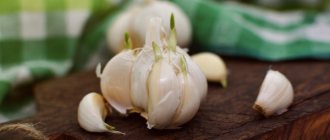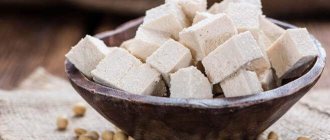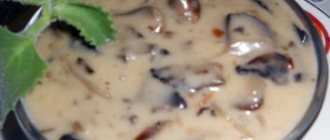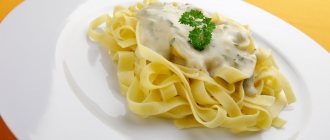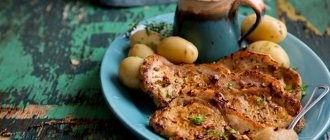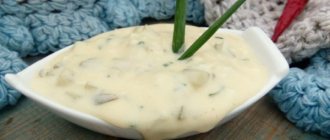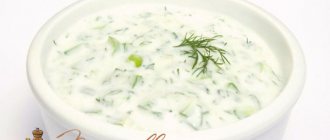Since ancient times, people have used ginger as a spice in cooking to make their dishes tastier, piquant and healthier. This root has absolutely incredible properties: it strengthens the immune system, kills harmful viruses, improves digestion, gives youth and beauty to the skin, and helps to lose weight. In addition, ginger root contains many vitamins and microelements that are indispensable for human health at any time of the year, especially in winter and in the off-season!
Not everyone likes to eat raw ginger, but ginger sauce is a great way to enrich your diet with useful substances, and at the same time pleasantly diversify the taste of your usual homemade dishes. The root itself has a bright, characteristic aroma and pungency, and goes well with spices, various vegetable oils, fruits, vegetables, and herbs. So you can make gravy from it to suit every taste! If you have never tried this, hurry up, you are missing out on a lot. It is both healthy and very tasty. And most importantly – it’s as simple as shelling pears!
How to make ginger sauce
A product like ginger sauce can be quickly prepared at home from a wide variety of ingredients. The preparation technology is extremely simple: you just need to combine all the components in one container and grind them to a homogeneous thick mass using a blender.
There are recipes that require preliminary thermal or other processing of products before they become components of the dressing. This applies to pickled ginger, processed cranberries, and stewed herbs.
In some dressings, to achieve the desired consistency, heating in a water bath or in the microwave, evaporation of excess liquid, heating to reveal the bouquet of odors from the spices included in the composition, simmering over low heat and other cooking technologies are required. The important point is to maintain the proportions of the ingredients.
Cooking features
One of the benefits of ginger sauce is how easy it is to prepare. However, the technology for creating this seasoning has its own subtleties, which it is better to learn about in advance.
- It is advisable to prepare ginger sauce not from dried ginger, but from fresh ginger. To do this, the root must be peeled and crushed using a grater or blender. Dry seasoning has a slightly different taste and aroma. The sauce from it will also be tasty, but different.
- High-quality fresh ginger does not look limp, there are no blue or green spots on its surface, it is moderately juicy, with a delicate yellowish tint.
- Try to follow the proportions recommended in the recipe, since if you change the ratio of components, the taste of the seasoning may become inharmonious. Be especially careful about maintaining the amount of ginger: if there is a lack of it, the ginger taste will be weakly expressed; if the recommended amount is exceeded, the sauce will turn out to be excessively tart and will be unpleasant to eat.
- You can pour ginger sauce over prepared dishes before serving or put it on the table separately, pouring it into a gravy boat.
The technology for preparing ginger sauce may vary depending on the recipe, but the general principles outlined above will remain the same.
Ginger sauce ingredients
To start preparing ginger sauce, you need to decide what dish it will be served with. Sweet and sour dressings are suitable for meat and poultry, soy - for fish, garlic and citrus - for meat and salads.
Both fresh crushed root and dried are added to sauces.
To achieve sharpness and pungency, use ground spice; for a lighter taste and a pronounced ginger-lemon aroma, use fresh root. What ingredients can be included in the dressing?
- Salt, pepper, other spices.
- Olive or sunflower oil.
- Soy sauce.
- Cane sugar.
- Lemon juice.
- Citrus zest.
- Cream.
- Lingonberry, cranberry.
- Garlic.
- Honey.
These are the components of the most common gas stations. They are accessible, simple, and familiar to both Europeans and residents of Asian countries. Many chefs incorporate exotic ingredients into ginger dressings to add flavor and create a new recipe. What sauces should be prepared for salad dressing, served with meat, fish or poultry, and what features are they characterized by?
Classic recipe
We'll start with the classic version of the sauce. In this form, ginger sauce can be used as a dressing, for pre-marination, and as a gravy for hot stewed and baked dishes.
Compound:
- ginger (grated root) – 3 teaspoons;
- lemon juice – 30 ml or 1 tablespoon;
- honey – 1 tablespoon;
- olive oil – 50-60 ml;
- soy sauce – 60 ml.
Cooking:
- We have already talked about the ease of making gravy. So, we start by simply mixing oil, lemon juice and soy sauce.
- Add grated root and honey to them, stir everything again, and get ginger sauce.
Citrus sauce
A classic component of many dressings is citrus juice. Usually it is lemon, but orange, grapefruit and exotic fruits themselves are often used. Such sauces are served with fish, poultry, vegetable and fruit salads. Orange-ginger sauce can be prepared according to the following recipe:
- grate the zest from a quarter of a lemon and an orange;
- grate 10-15 grams of ginger root;
- Soak 50 grams of raisins in hot water, rinse, cut into halves;
- squeeze 3 tbsp from lemon. l. juice;
- combine all the ingredients, add honey (15-20 g) softened in a water bath and half a teaspoon of mustard, mix well.
This dressing is not uniform in consistency, so lovers of thinner sauces prefer to grind all the ingredients in a blender.
Citrus dressings go well with almost all dishes except red meat
Another recipe for ginger sauce, which is especially good for salad with poultry or fish:
- prepare 100 ml orange and 20 ml lemon juice;
- grate 20 g ginger;
- mince 1 large clove of garlic;
- chop 10 g chili;
- put the ingredients in a saucepan, add salt, add sugar, put on fire and bring to a boil;
- melt 160 g of butter and add to the mixture;
- let cool slightly and serve with the main dish.
Butter is used here and in other dressings as a thickening agent, so its volume can be reduced or increased according to your preferences.
Creamy sauce with ginger
Delicate creamy ginger sauce will be a wonderful addition to any meal. To prepare it you need to use the following ingredients:
- 40 g ginger root;
- 50 ml cream;
- 2 cloves of garlic;
- ground nutmeg, salt, pepper.
The gravy recipe is extremely simple:
- Heat cream over low heat until simmering;
- Remove the cream from the heat and let it cool slightly;
- Add ginger to the sauce, heat the mixture for a few minutes;
- Enter the remaining ingredients.
Cranberry-ginger dressing
Like citrus sauce, cranberry ginger sauce is also suitable for salad, fish and poultry. Based on it, you can prepare dressings not only with cranberries, but also with lingonberries. Their sweet and sour taste goes well with chicken, salmon, and white fish.
What to cook with ginger
The cooking recipe is as follows:
- rinse and lightly dry 400 g of cranberries;
- chop 1 tbsp. l. root;
- add 200 g sugar;
- pour the ingredients 2 tbsp. l. water, put on fire and cook until thick;
- remove from heat, pour in 2 tbsp. l. vinegar, let cool.
The sauce keeps well in the refrigerator for up to 7-10 days. It has a beautiful color, thick consistency and bright aroma. In the recipe, vinegar is sometimes replaced with red wine.
Honey mustard salad dressing
recipethis.com
Ingredients
- 120 ml vinegar;
- 240 g mayonnaise;
- 1 teaspoon table mustard;
- 1 teaspoon sugar;
- 1 teaspoon chopped onion;
- 170 g honey;
- 1 teaspoon chopped parsley;
- ¼ teaspoon salt;
- ¼ teaspoon ground black pepper;
- 120 ml vegetable oil.
Preparation
Mix vinegar, mayonnaise and mustard. Add sugar, onion, honey, parsley, salt and pepper. Stirring constantly, pour in the oil in a thin stream. Stir until smooth.
This dressing can be stored in the refrigerator for a couple of weeks.
Garlic-ginger sauce
This dressing acts as a sauce for meat or vegetable salads, and can also be used as a marinade for pork, lamb, shrimp and other seafood. All ingredients are thoroughly crushed using a blender to the desired consistency without inclusions.
Garlic gives the dressing the main flavor and acts as a preservative.
Required components:
- 30 g ginger root;
- onion – 1 pc.;
- 4 cloves of garlic;
- soy sauce – 6 tsp;
- 2 tsp. ground paprika;
- 0.5 tsp. ground pepper;
- olive oil.
First, grind all the coarse ingredients with the addition of spices, then add soy sauce and lastly olive oil until the desired consistency is achieved. Garlic-ginger sauce can be used; it can be stored in the refrigerator in a glass container for a long time.
Pork in ginger-cognac sauce
Ingredients:
- pork – 0.5 kg;
- ginger – 20 g;
- cognac – 10 ml;
- honey – 2 table. spoons;
- lemon – 1 pc.;
- garlic - 1 head.
Pour lemon juice over the pork and sprinkle with finely chopped garlic. Marinate for half an hour and then fry in a frying pan until golden brown. Prepare the sauce: mix honey, grated ginger and cognac, heat it in a frying pan, pour it over the meat. Cook the meat covered for about 30 minutes.
Ginger-soy
Soy sauce is the most commonly used ingredient in most dressings and marinades. It can be combined with a wide range of ingredients, which includes ginger root. To prepare the simplest dressing you need:
- combine 40 g of liquid honey, olive oil and lemon juice in one container;
- grind 30-40 g of fresh root;
- add 50 g soy sauce;
- Mix everything in a blender and serve.
As a more complicated option, you can prepare ginger-soy sauce with the addition of chopped onions, wine vinegar, sugar, salt, spices, tomatoes, mustard and other products. The recipe for such a dressing does not require scrupulous calculation of the proportions of ingredients; you can safely experiment until the desired bouquet of aromas and tastes of homemade ginger sauce is achieved.
If the dressing contains soy sauce, there is no need to add salt.
In Japanese cuisine, fish is often served with ginger sauce and wasabi. To prepare it in your home kitchen, you need:
- grate 1 dessert spoon of root;
- combine with 125 g of unsweetened natural yogurt and a tablespoon of lemon juice, beat;
- Dilute 40 g of wasabi with 100 g of mayonnaise, add 1 tbsp. l. soy sauce;
- Combine all ingredients, mix, put in the refrigerator to thicken for 1 hour.
The dressing is spicy and thick enough to dip pieces of seafood into. Wasabi is diluted with mayonnaise in order to get rid of its too hot taste, so if necessary, the volume of mayonnaise is increased or decreased.
Salads without mayonnaise: 5 recipes for light sauces
1 tsp lime or lemon juice half a large sour green apple 1/4 celery root a bunch of dill
Preparation:
Grate the apple on a very fine grater, drain the juice, sprinkle with lemon juice to prevent the apple from darkening. Grate the celery on a very fine grater or grind in a blender. Combine all ingredients and mix.
Cucumber salad dressing
Cucumber sauce will become indispensable in heavy salads with boiled meat. Ideal for the Stolichny salad, any salads with boiled meat, potatoes, lettuce, cucumbers, cheese and seafood. The whole secret of the sauce is that fresh cucumbers contain a huge amount of tartronic acid, which inhibits the process of processing carbohydrates and helps break down existing fat. But you can only use cucumber sauce with cold salads, since tartronic acid loses its magical properties when heated.
Ingredients:
100 g soft cream cheese 2 tbsp. thick sour cream a bunch of any greens
Preparation:
Grate the cucumber on a fine grater along with the peel. Add chopped garlic, chopped herbs, sour cream and soft cheese. Mix thoroughly until smooth.
The cucumber juice in this sauce can be squeezed out as desired, depending on whether you need a thicker or thinner sauce.
Ginger salad dressing
Use ginger sauce in “Herring under a fur coat.” A great idea for those who adore the legendary “Herring under a fur coat.” Also suitable for salads and appetizers with any salted fish, mushrooms, warm vegetable salads and salads with feta cheese. Ginger contains a special substance - gingerol, which quickly improves blood circulation and, like a powerful turbo reactor, accelerates metabolism. In addition, gingerol enhances heat production and, thereby, burns calories - eat and lose weight to your heart's content!
Ingredients:
2 tsp Dijon mustard (no Dijon, use regular) 1 tsp. ground ginger (or 2 cm fresh ginger root) 1 bunch of dill
Preparation:
Chop the dill very finely. If you use fresh ginger root, grate it on a fine grater. Mix all products and leave to brew for 30 minutes.
Cranberry sauce for salad
Cranberry sauce is a great alternative to mayonnaise in traditional crab salad. This sauce is suitable for salads that contain crab sticks, rice, fresh tomatoes, cucumbers, hard cheese, brine cheese, fish, olives, black olives and leafy greens. Due to their high acid content, cranberries help to better digest fatty foods. Cranberries contain plenty of fiber, which reduces the calorie content of your salads, and pectins, which lower blood cholesterol, improve metabolism and speed up the elimination of toxins after drinking alcohol. There is no need to add salt to the dressing!
Ingredients:
lovecook.me
Quick and easy sesame and ginger dressing
Did you find this post helpful or inspiring? Save THIS PIN
to his
blog board
on
Pinterest
, Pin1K Share Tweet1K Share
Homemade Sesame Ginger Dressing It's made with ingredients like sriracha, sesame oil, and rice wine vinegar. This light blend will give your salads an authentic Asian twist.
This extremely tasty recipe is especially great for dressing up an Asian noodle salad, but it's also delicious topped with fresh arugula or fresh herbs (or even coleslaw).
Make sesame and ginger sauce
If you can shake the jar, you can make sesame and ginger dressing! With just a little preparation and two simple steps, you're ready to go!
- Squeeze a lime, chop a clove of garlic and grate some ginger.
- Measure and add each ingredient (recipe below) into a jar or pitcher and shake to combine.
Toasted sesame oil adds a fabulous nutty flavor complemented by the tangy flavor of the sriracha sauce. Lime juice is ideal, but you can use lemon if that's all you have on hand.
Follow us on Pinterest!
You can use any red chili sauce, but if you've never cooked with Sriracha before, let this recipe be your introduction to this fabulous Thai seasoning! Made from chili peppers, garlic, sugar and vinegar, Sriracha's unique flavor has led to it gaining popularity and becoming a staple in many kitchens around the world.
How to Store Sesame and Ginger Dressings
Store sesame and ginger dressing in a glass jar or salad for an easy dressing. You can store it in a cupboard or in the refrigerator.
How long it will be going on? This dressing is literally a keeper, thanks to its oily and acidic base ingredients. It will stay in the refrigerator for a month (although it never lasts that long here). Sesame oil can become rancid if stored for too long.
Harm of ginger
The pungency of the root vegetable acts on the mucous membrane of the stomach and intestines as an irritant. For this reason, ginger is prohibited for peptic ulcers, gastritis, hemorrhoidal complications, and colitis.
The plant’s ability to enhance internal secretion negatively affects the functions of the affected liver and gall bladder. The presence of stones in organs, cirrhosis, hepatitis cannot be combined with the use of products with ginger.
A tendency to bleeding, increased blood pressure, and heart problems require complete avoidance of this seasoning so as not to provoke a deterioration in health.
Regarding pickled ginger, it is known that it has less benefits than fresh or dry seasoning. Marination involves the presence of sugar, dyes and various additives, including artificial ones. Excess salt causes swelling and increases blood pressure.
Nutritionists recommend caution when consuming this plant. You can only try in small portions and listen to your body. The root vegetable does not combine with some medications (blood thinners).
A little history of ginger
The plant has been known to mankind for about 5000 years. On Russian soil they knew about ginger and used it. It was highly valued and was even used as a currency. Little by little, people learned about the healing properties of the plant. Since this crop was cultivated in Southeast Asia, there was a dependence on supplies. At some time they stopped, and people began to forget about such a plant. Now ginger and ginger sauce are again popular in Russia as a pickled addition to Japanese dishes.
Recipe for meat dishes
The set of products in ginger gravy for meat includes fruits (peach, mango, pineapple). With them they acquire a special taste elegance.
Ingredients:
- grated ginger – 2 teaspoons;
- peach, mango or pineapple – 150 grams;
- Dijon mustard – 1 teaspoon;
- sugar – 3 tablespoons;
- salt to taste;
- olive oil – 50 ml;
- a little white allspice;
- parsley (greens) - several sprigs.
Cooking steps:
- So, we have grated ginger root. All products are at hand. Remove the skin from the peach and cut it into small pieces.
- Now we need a saucepan. Pour 2-3 tablespoons of water into it, put peach pieces and cover them with sugar. Let's start heating. We need the sugar to completely dissolve and the contents of the pan to begin to boil.
- At the moment of boiling, pour ginger into the saucepan, reduce heat, cook for 10 minutes.
- Remove the hot stock from the stove, take a large spoon and transfer all the ingredients from the pan into the blender bowl. We also send all other products there. Grind until smooth. Now the ginger sauce is completely ready to serve.



